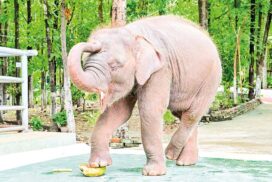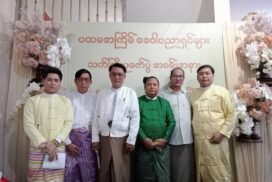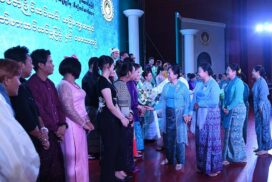Bagan holds a special place in the hearts of those who appreciate the ancient cultural heritage and Myanmar’s historical events that elevated the prestige of the First Myanmar Empire under the reign of King Anawrahta from the 11th to the 13th centuries. Since then, Bagan and its residents have diligently preserved cultural artefacts and historical evidence.
Successive governments have also taken measures to ensure the sustainability of these ancient cultural treasures, including mural paintings, stone inscriptions, decorative works on ancient structures, architectural marvels, and construction techniques. In addition, damaged buildings have been carefully restored to their original glory in accordance with UNESCO guidelines.
Thanks to the concerted efforts of governments, local authorities, and residents, the Bagan cultural region was officially recognized as a UNESCO World Heritage Site in 2019. This achievement fills Myanmar with pride and serves as a strong motivation to intensify preservation efforts in other cultural regions throughout the country, with the ultimate goal of attaining global heritage status.
Through the collaborative endeavours of Myanmar and Indian experts, the aim is to revive the historical grandeur of these ancient buildings and preserve the cultural heritage of the Bagan region for future generations. These joint efforts will serve as a testament to the friendly ties and cooperation between Myanmar and India, reinforcing their strong bond.
However, recent heavy rains caused by cyclone Mocha have wreaked havoc on many ancient religious edifices in Bagan. Taking responsibility for the restoration of these buildings and the preservation of the golden lacquerware letters in the tunnel of the historic Ananda Temple, the Department of Archaeology and National Museum has swung into action.
Archaeological experts from the Archaeological Survey of India (ASI) and specialists from various sections of the DANM are collaborating to restore these structures to their original forms. The restoration efforts were initiated on June 5, 2023.
The primary objective of the department is to ensure that the ancient buildings within the Bagan cultural region retain their original style. Experts from both Myanmar and India have been meticulously inspecting and supervising the different phases of this cooperative project since June 16. As of now, more than 40 per cent of the maintenance work has been completed, with officials closely monitoring the progress of restoring these culturally significant structures.
Currently, Myanmar and Indian experts are focusing their efforts on restoring specific buildings such as Nat Hlaung Kyaung, Thagyapone Pagoda, and Myataung brick monastery. Furthermore, the golden lacquerware letters, depicting the life of the embryo Buddha, are undergoing a meticulous cleansing process in the tunnel of Ananda Temple.
Through the collaborative endeavours of Myanmar and Indian experts, the aim is to revive the historical grandeur of these ancient buildings and preserve the cultural heritage of the Bagan region for future generations. These joint efforts will serve as a testament to the friendly ties and cooperation between Myanmar and India, reinforcing their strong bond.













